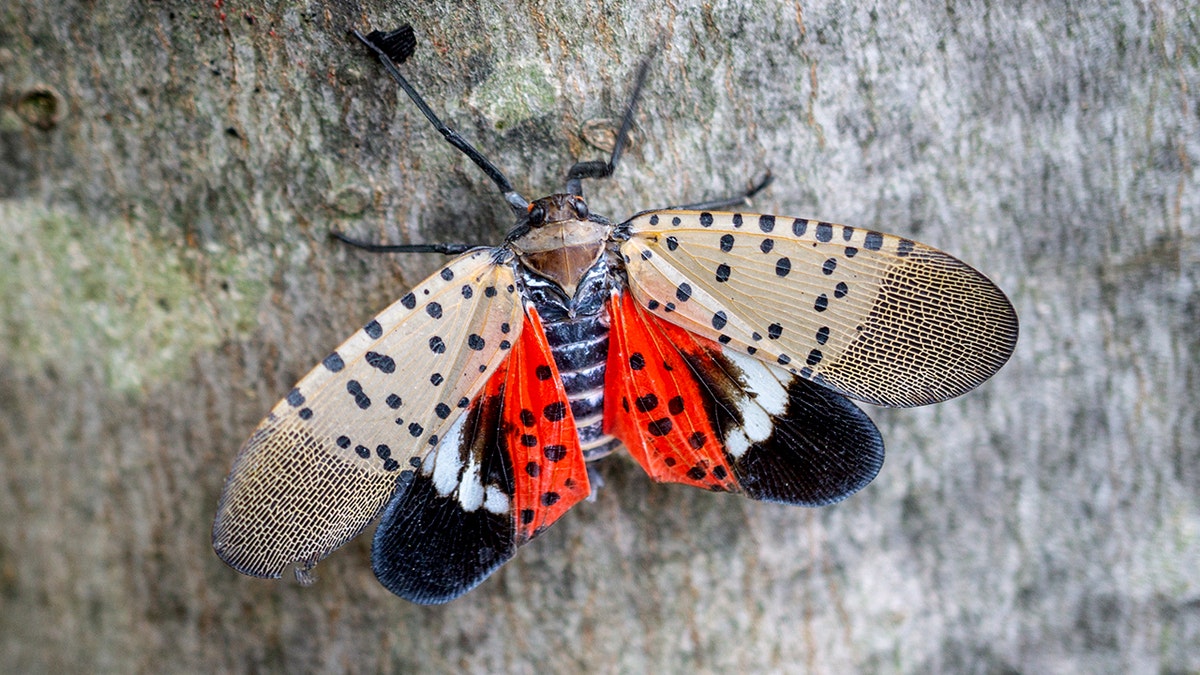Fox News Flash top headlines for August 16
Fox News Flash top headlines are here. Check out what's clicking on Foxnews.com.
Sightings of the invasive spotted lanternfly have been increasing across the United States.
Environmental agencies are calling the pest a threat and urging those who stumble upon the insects to squash them and alert local officials.
But why is the insect considered to be public enemy number one?
Here’s what you should know about the spotted lanternfly.
MURDER HORNETS GET NEW NAME IN WASHINGTON STATE AFTER INSECT GROUP CREATES ‘COMMON NAME’

The spotted lanternfly has black spots with tan wings and patches of red and black. (iStock)
Where is it from?
The spotted lanternfly, also known as Lycorma delicatula, is native to China, where scientists say it has been known as a medicinal insect since the twelfth century and is used to relieve swelling.
What does it look like?
In its adult stage, the winged pest is approximately 1 inch long and half an inch wide at rest, with tan, semi-transparent forewings, black spots, patches of red and black, and a white band and yellow and black abdomen, according to the Pennsylvania Department of Agriculture.
The spotted lanternfly's immature stages are black with white spots, and they develop red patches as they mature.
Why is it a threat?
The USDA National Invasive Species Information Center says it poses a "serious economic threat to multiple U.S. industries," including the country’s grape, orchard, nursery and logging trades.
The insect feeds on agricultural crops like grapes, apples and hops, and a variety of trees including apple, cherry, maple, oak, peach, pine, plum, poplar, sycamore, walnut and willow.
Signs of infestation include sap oozing from tree trunks; 1-inch-long, brownish-gray or brown and scaly egg masses; and honeydew build-up under plants. The lanternflies excrete honeydew, which encourages the growth of black sooty mold.

Spotted Lanternfly (lycorma delicatula) infestations have caused Pennsylvania's Department of Agriculture to issue a quarantine invasive insect. (iStock)
US sightings
It was first detected in Pennsylvania in 2014 but appeared to have already been present for two to three years prior, according to the USDA National Invasive Species Information Center.
It has since been confirmed in at least 12 other states: New York, New Jersey, Delaware, Maryland, Connecticut, Virginia, Michigan, Ohio, Indiana, North Carolina, Iowa and Massachusetts.

Close-up of spotted lanternfly on peach tree in Berks County, Pennsylvania. (iStock)
What should you do?
Those who come across the invasive insects are being told to submit public reports using state websites – after first killing the pest.
"Kill it! Squash it, smash it ... just get rid of it," the Pennsylvania Department of Agriculture has stated.
CLICK HERE TO GET THE FOX NEWS APP
New Jersey's Department of Agriculture has similarly said: "If you see a Spotted Lanternfly, help us Stomp it Out."
Fox News’ Julia Musto and The Associated Press contributed to this report.










































